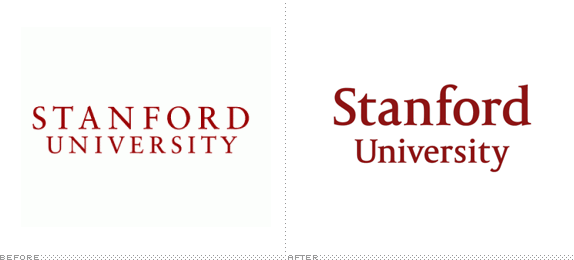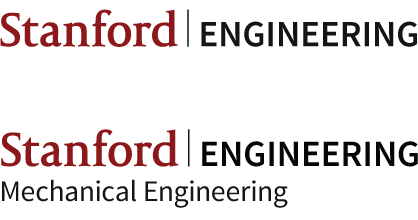
Established in 1891, Stanford is one of the most prominent universities in the United States. Currently, 6,927 undergraduate and 8,871 graduate students are enrolled and taught by 1,995 faculty members, which at the moment include 19 Nobel laureates, 4 Pulitzer Prize winners, 24 MacArthur Fellows. Its proximity to Silicon Valley has made it a breeding ground for nerds of all kinds, some of whom have grown up to be millionaire nerds (i.e., Google founders Larry Page and Sergey Brin). Without any fanfare, Stanford has recently updated its "signature" (or wordmark) while maintaining all the other symbols and emblems — the Block "S", the Block "S" with Tree, and the University Seal— intact. A comprehensive identity section on their website covers the identity system in detail and the bulk of their online presence has converted to the new signature and web fonts while others catch up.



Academic units lock-up.

University centers and institutes lock-up.

Administrative units lock-up.
The previous logo was fine. It's hard to argue against a simple, generously letterspaced, all uppercase, serif wordmark but look at the opening image: the old logo is about 20 pixels wider than the new one and it has half the presence. The new wordmark, by being more condensed and set in lowercase takes up less real estate and has more visibility. Also, it's way nicer. At first I thought it was Perpetua, but this one is more condensed and the "S" doesn't match. (Type nerds are welcome to chime in with their guess). And because Stanford does not need, at all, to reinvent itself, this change is a perfect evolution into something that feels familiar and not too different from the previous version. One of the hardest things in designing for universities is establishing a logo that will accommodate all the different schools and centers and wacko people who think they need their own proprietary logo. The images above demonstrate how well this new signature works in remaining the star attraction while all the super lengthy names sit around it. In terms of identity elements, there isn't much, but where this new system really shines is on the web, with a very clean and streamlined look, built around open source fonts from Google. Apart from the home page and initial pages, the identity has been applied to the Stanford Nobel Laureates, Stanford Arts, and Stanford Identity Toolkit websites. All worth a look. The most exciting identity redesign this is not. But it's definitely a good one and a reminder that not all successful identities have to be about the visual exploits of the designer or firm.


Thanks to Roy Nesseth for the tip.

Don't forget to cast your vote about this post online
